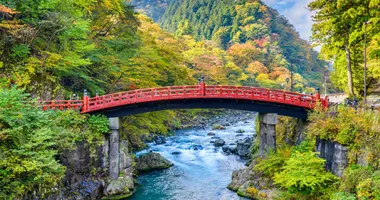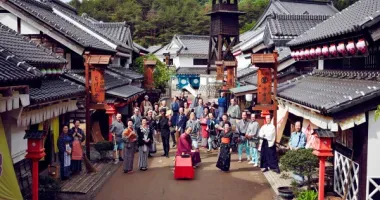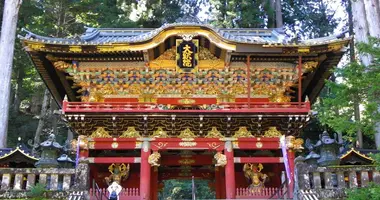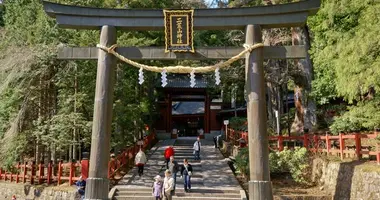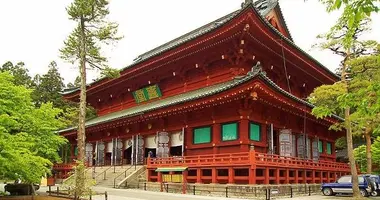Oyaji Temple Utsunomiya
- Published on : 16/11/2018
- by : Japan Experience
- Youtube
Japanese Temples: Oyaji Temple, Utsunomiya 大谷寺, 宇都宮
- History of the Temple
- Legend of the White Serpent
- Oyaji Temple Garden
- Otome Hill
- Heiwa Kannon Statue
- Oyaji Temple Treasure House
- Accommodation
- Access
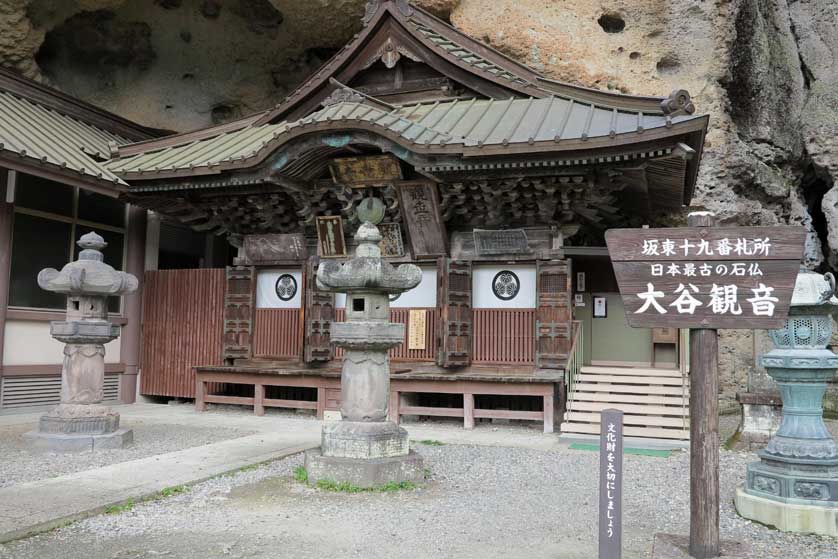
Oyaji Temple, Oya Valley, Utsunomiya, Tochigi Prefecture
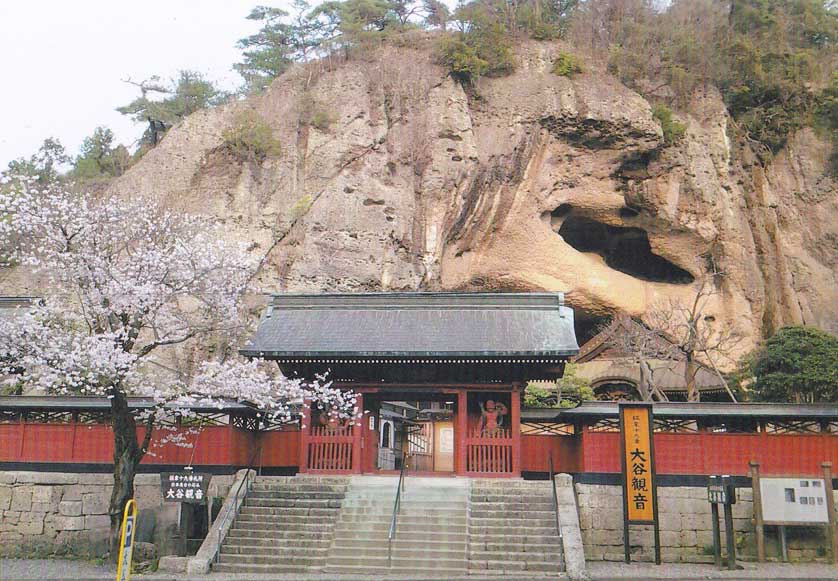
Entrance to Oyaji Temple, Oya Valley, Utsunomiya, Tochigi Prefecture
Oyaji Temple in the town of Oya, just 7 km north west of Utsunomiya in Tochigi Prefecture, is believed to have the oldest relief statues of Buddhist images in Japan.
The temple is carved in to a vertical rock face of Oya stone and the resulting cavern holds a series of impressive Buddhist relief statues (magaibutsu).
Other early, Heian Period relief figures in Japan are mostly found in the Kunisaki Peninsula in Oita Prefecture, Kyushu at Bungo Ono and Usuki.
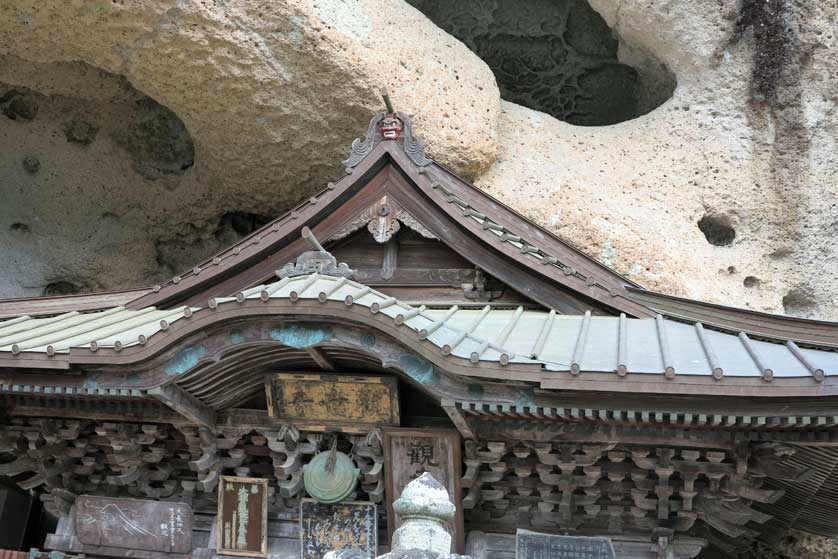
Oyaji Temple, Oya Valley, Utsunomiya, Tochigi Prefecture
History of the Temple
The temple is said to have been founded by Kukai (Kobo Daishi) in 810 during the Heian Period of Japanese history. However, this is open to some considerable doubt.
The main image of the temple is a stone carving of the Goddess Kannon, the Senju Kannon. In Japanese Buddhism, Kannon is the Goddess of Mercy.
The Senju Kannon, also said to have been carved by Kobo Daishi, is almost four meters high and it features the goddess as having "a thousand" arms, holding an eye in each hand, "representing the desire to save mankind".
The statue is flanked by carvings of Fudo Myo-o and Bishamonten.
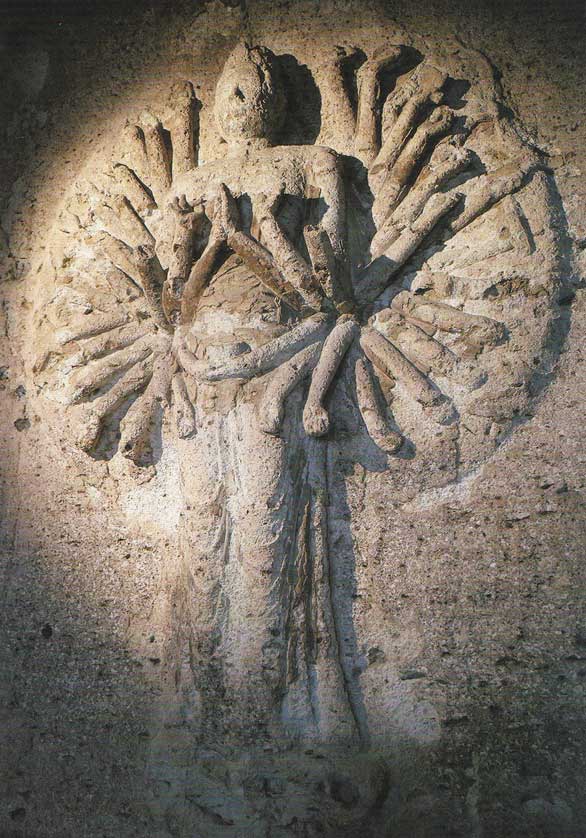
Senju Kannon, Oyaji Temple, Oya Valley, Utsunomiya, Tochigi Prefecture
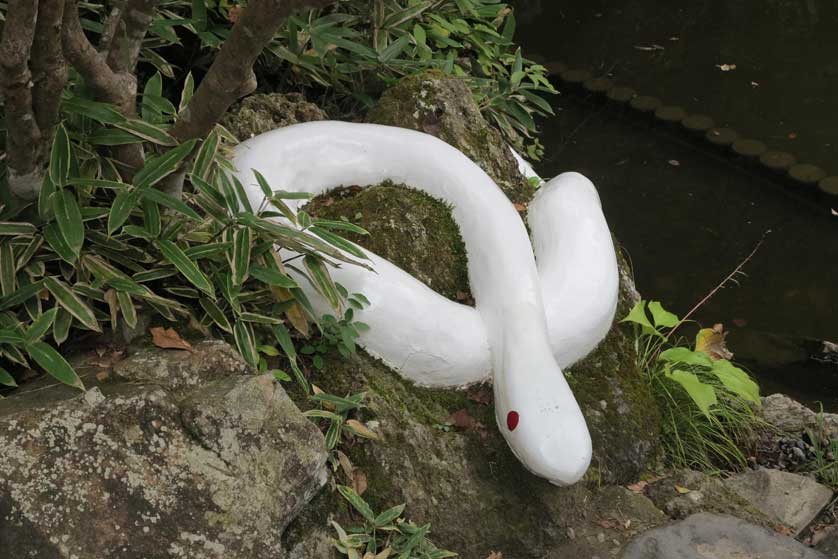
White Snake, Oyaji Temple, Oya Valley, Utsunomiya, Tochigi Prefecture
Legend of the White Serpent
As so often, there is a legend (engi) associated with the origins of the temple.
In ancient times, a well of clear fresh water was sprouting forth from a hidden dent in the rock front. However, in the well lived a venomous serpent and from time to time, the serpent would spit its poison into the water, killing people who merely touched the water.
When Kobo Daishi passed through the area, the villagers told him about their troubles with the snake. Kobe Daishi went into the hidden dent and when he emerged again (here the accounts differ, some say after one night, others after ten days), he told the villagers that he had taken care of the snake.
Kukai said goodbye and went on his way. When the villagers themselves entered the cave, they were greeted by the shining carving of the Senju Kannon.
The serpent had been transformed into a white snake, embodying a benevolent Indian god. To this day, in a small red tower in the temple's Japanese garden, a living white snake is kept along with a stone image of the animal in the pleasant temple garden.
Inspired by Kobo Daishi, the villagers became devout Buddhists, so the story goes, and erected the temple surrounding the Senju Kannon.
More recent research came up with very different but no less remarkable assumptions about the origins of the Senju Kannon.
Comparative studies claim close similarities between the Senju Kannon and ancient stone carvings in Bamiyan Valley, Afghanistan. An unknown Buddhist stone carver from Afghanistan might have made his way to Heian Period Japan (794-1185) and created the Senju Kannon, the researchers concluded.
Besides the Kannon carving, the temple also houses a number of Buddha carvings from the same period of the Senju Kannon.
These are arranged in three groupings of three reliefs with nine statues in all.
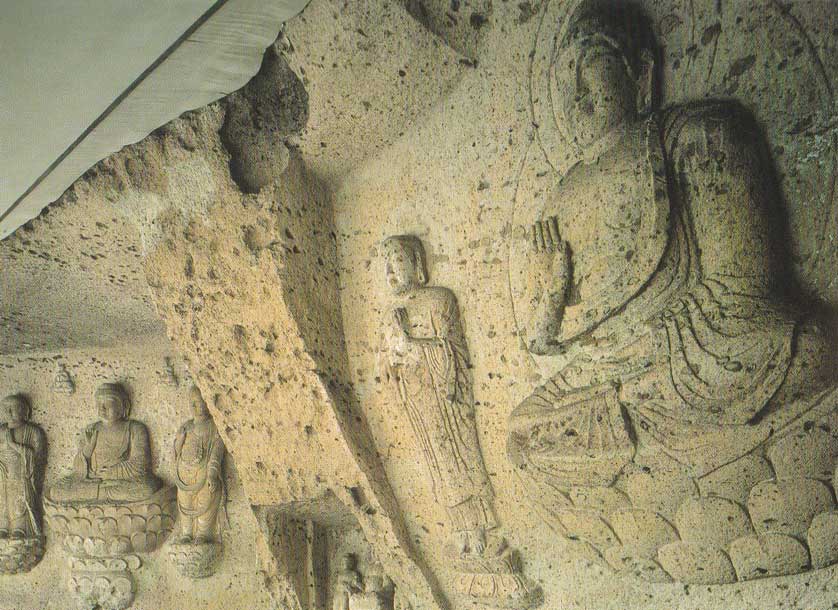
Relief carvings, Oyaji Temple, Oya Valley, Utsunomiya, Tochigi Prefecture

Carved Buddhist relief, Oyaji Temple, Oya Valley, Utsunomiya, Tochigi Prefecture
Oyaji Temple Garden
The temple garden at Oyaji contains the white snake figure as well as several lotus ponds, vermillion-painted bridges and pavilions.
The spacious garden is a very pleasant place to stroll after emerging from the confines of the cavern holding the relief carvings.
One shrine is dedicated to Benzaiten, the goddess of wisdom and compassion and one of the Seven Lucky Gods of Japan (Shichifukujin). Benzaiten is often found near water and is believed to have the power to overcome snakes.
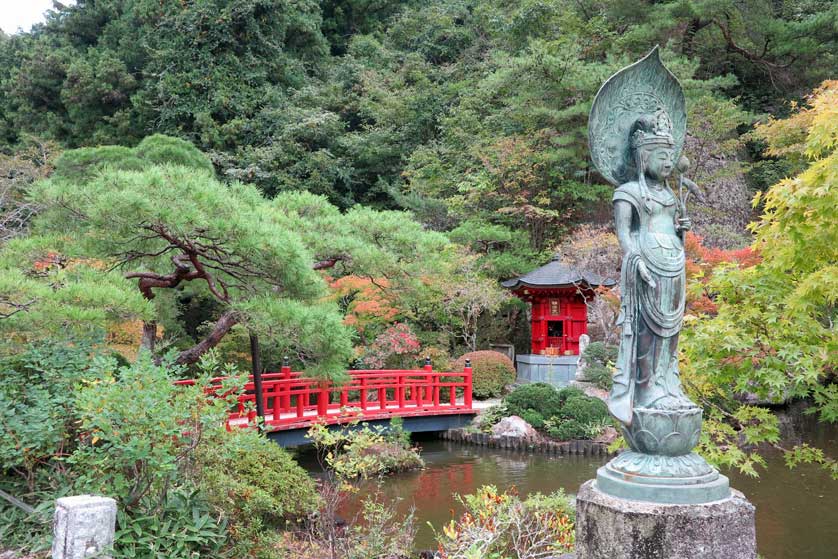
Garden with Benzaiten shrine, Oyaji Temple, Oya Valley, Utsunomiya, Tochigi Prefecture
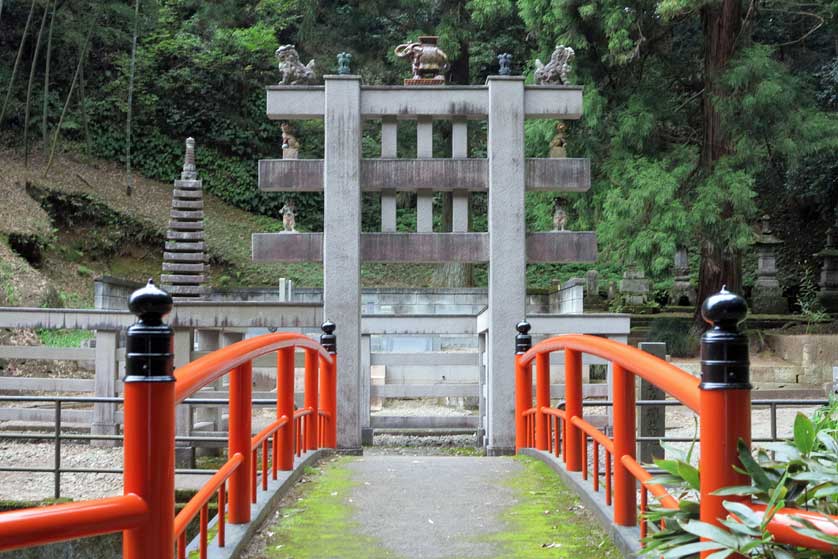
Shrine with Indian style torii gate, Oyaji Temple, Oya Valley, Utsunomiya, Tochigi Prefecture
Otome Hill
A 15 minute walk beyond the garden is Otome Hill, a place of scenic beauty and designated as such in Tochigi Prefecture along with Kegon Falls in nearby Nikko.
During the Edo Period the area was off limits to allow the Imperial family to collect matsutake mushrooms. Hence the name, Otome - meaning "Stop."
A stone monument at the top of the hill commemorates a visit here by Emperor Taisho.
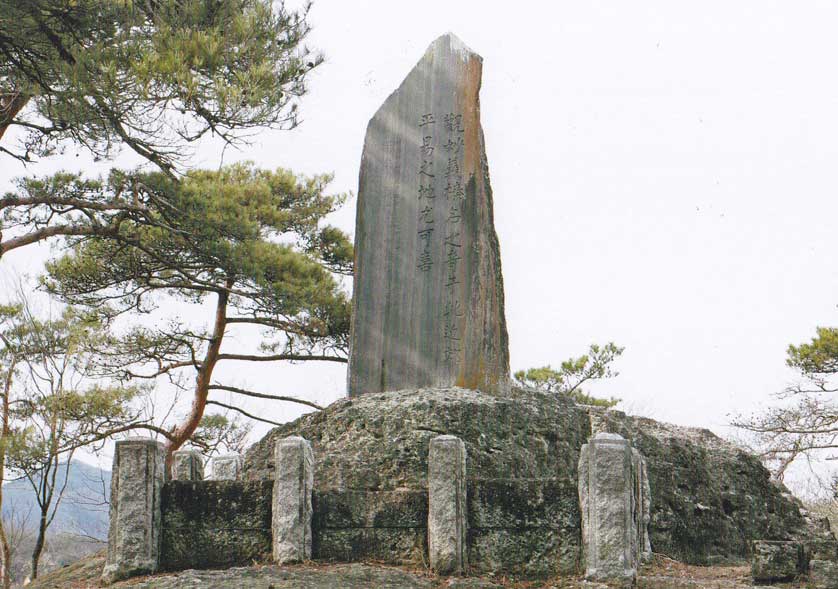
Taisho Emperor Monument, Otome Hill, Oya Valley, Utsunomiya, Tochigi Prefecture
Heiwa Kannon Statue
On the walk to the temple from the car park and bus stop to Oya Park off Oya Kaido is the Heiwa Kannon Statue.
This impressive and sturdy 27 meter tall image of Kannon, carved in Oya stone, from a former quarry, was constructed after World War II from 1948-1956. The statue serves to remember and honor the victims of that tragic conflict.
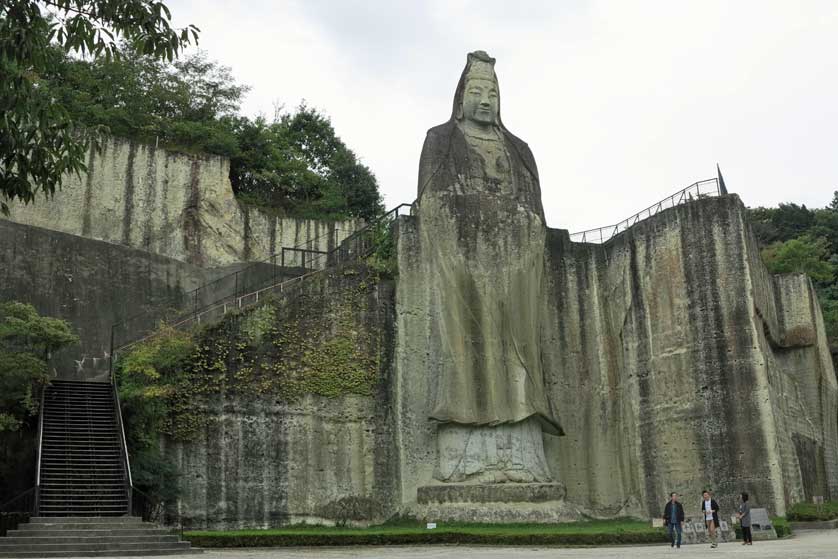
Heiwa Kannon Statue, Oya Valley, Utsunomiya, Tochigi Prefecture
Oyaji Temple Treasure House
The quirky Oyaji Temple Treasure House just as you exit the temple contains archaeological finds discovered during restoration work at the temple.
These include pottery and flint shards displayed in glass cases and the skeleton a young male dating from the Jomon Period (seen below).
Also on display are wooden statues and photographs explaining the work carried out to restore the temple.
Close to the car park in Oya Park is one of several trendy cafes built in Oya stone that have become a feature of the area in recent years. The Standard Bakers has excellent bread and pastries with outdoor tables to enjoy the food and coffee. it serves breakfast, lunch, and dinner.
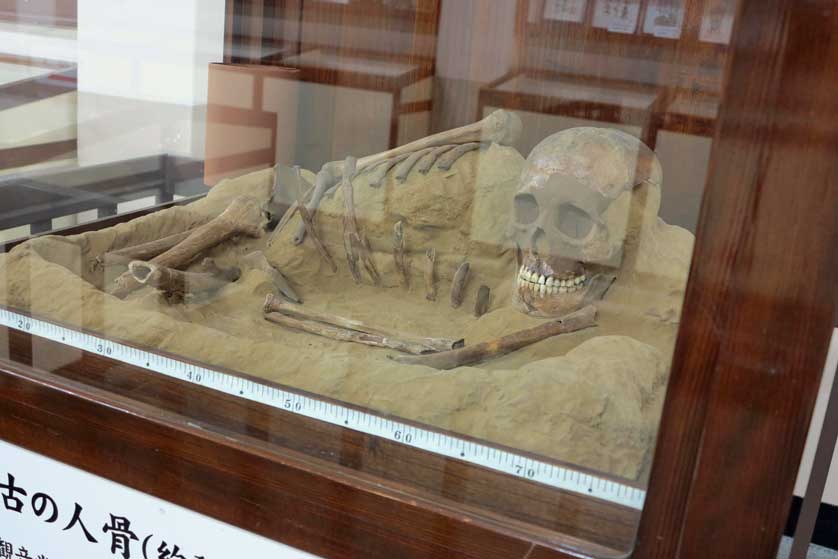
Oyaji Temple Treasure House, Oya Valley, Utsunomiya, Tochigi Prefecture
Accommodation in Utsunomiya
Much of the hotel accommodation in Utsunomiya is clustered around Utsunomiya Station. Recommended places to stay in Utsunomiya include the Richmond Hotel Utsunomiya-ekimae, Richmond Hotel Utsunomiya-ekimae Annex, Hotel Mystays Utsunomiya, Chisun Hotel Utsunomiya and Hotel Sunshine Utsunomiya.
Access - how to get to Oyaji Temple
Oyaji Temple
1198, Oya-machi
Utsunomiya
Tochigi 321-0345
Tel: 028 652 0128
Hours: April - September 8.30 am - 5 pm; October - March 9 am - 4.30 pm; closed 2nd and 4th Thursday January to March; December 19 - 31.
Admission: Adults 400 yen; Junior High students 200 yen; Elementary students 100 yen.
Regular Kanto buses from Utsunomiya Station run out to Oya. The journey takes about 30 minutes. Get off at the Oya Kannon-mae (大谷観音前) bus stop.
By car exit the Tohoku Expressway at the Utsunomiya IC.
Further Attractions in Utsunomiya
Book Hotel Accommodation in Tokyo Japan
Books on Tokyo Japan
Oyaji Temple in Oya near Utsunomiya is a cave temple with Japan's oldest relief statues which are believed to date from the early Heian Period.
